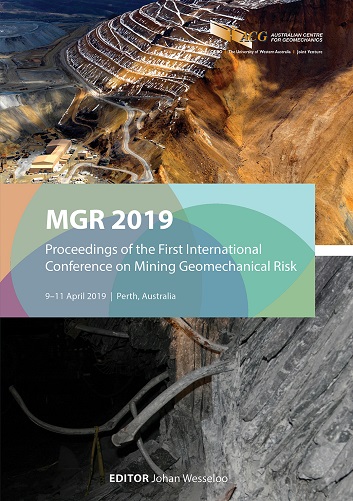Geohazard risk management for linear transportation

|
Authors: Lato, M; Quinn, P; Porter, M; Newton, S; Dixon, R; Wessels, SDN; Wessels, L; Sirois, D; Leveque, M |
DOI https://doi.org/10.36487/ACG_rep/1905_19_Lato
Cite As:
Lato, M, Quinn, P, Porter, M, Newton, S, Dixon, R, Wessels, SDN, Wessels, L, Sirois, D & Leveque, M 2019, 'Geohazard risk management for linear transportation', in J Wesseloo (ed.), MGR 2019: Proceedings of the First International Conference on Mining Geomechanical Risk, Australian Centre for Geomechanics, Perth, pp. 323-336, https://doi.org/10.36487/ACG_rep/1905_19_Lato
Abstract:
Railways that deliver ore from mines to market are critical to an operation’s viability. Two examples of such railways include the Rio Tinto Iron Ore (RTIO) railway in the Pilbara region of Western Australia, and the Iron Ore Company of Canada (IOC) railway in northeastern Canada. Both railways are the only transportation mode from 17 mine sites to the ports to deliver their products to markets; annually, these railways ship over 330 million tonnes of iron ore (RTIO) and over 10 million tonnes of iron pellets (IOC). Although separated by over 16,000 km, different terrains, climates and operating regulations, these railways face similar challenges with respect to assessing and managing the risks associated with geohazards, in particular rockfall, landslides, and flooding geohazards. This paper presents risk-based frameworks for the IOC and RTIO railways, and the development of web and mobile based platforms to support effective geohazard risk-management practices within corporate risk frameworks. The output risk rating for each credible geohazard affecting the railway is used to support risk management through inspections, remediation projects and optimisation of maintenance and in situ or remote monitoring efforts. The geohazard management systems are also used in combination with live monitoring data to actively alert railway operators of changing conditions and potential triggering events, such as flooding or heavy rainfall. The systems that will be presented are used to support decisionmaking and communication of geohazard threats within their organisations.
Keywords: geohazards, railway, risk-management systems, iron ore
References:
Australian Geomechanics Society 2007, ‘A national landslide risk management framework for Australia’, Journal and News of the Australian Geomechanics Society, vol. 42, no. 1.
Canadian Standards Association 1997, CAN/CSA Q850-97, Risk Management: Guidelines for Decision Makers, Canadian Standards Association, Ontario.
District of North Vancouver 2009, Report to Council: Natural Hazards Risk Tolerance Criteria, District of North Vancouver, North Vancouver.
Hong Kong Geotechnical Engineering Office 1998, Geoguide 5: Guide to Slope Maintenance, Geotechnical Engineering Office, Kowloon.
International Organization for Standardization 2009, ISO 31010:2009 Risk Management – Risk Assessment Techniques, International Organization for Standardization, Geneva.
Porter, MJ & Morgenstern, NR 2013, Landslide Risk Evaluation: Canadian Technical Guidelines and Best Practices Related to Landslides – A National Initiative for Loss Reduction, Open File Report (Geological Survey of Canada) 7312, Geological Survey of Canada, Calgary.
Porter, M, Jakob, M & Holm, K 2009, ‘Proposed landslide risk tolerance criteria’, Proceedings of the 62nd Canadian Geotechnical Conference, The Canadian Geotechnical Society, Richmond.
Stewart, IE, Baynes, FJ & Lee, IK 2002, ‘The RTA guide to slope risk analysis version 3.1’, Australian Geomechanics: Journal and News of the Australian Geomechanics Society, vol. 37, no. 2, pp. 115–147.
© Copyright 2025, Australian Centre for Geomechanics (ACG), The University of Western Australia. All rights reserved.
View copyright/legal information
Please direct any queries or error reports to repository-acg@uwa.edu.au
View copyright/legal information
Please direct any queries or error reports to repository-acg@uwa.edu.au
